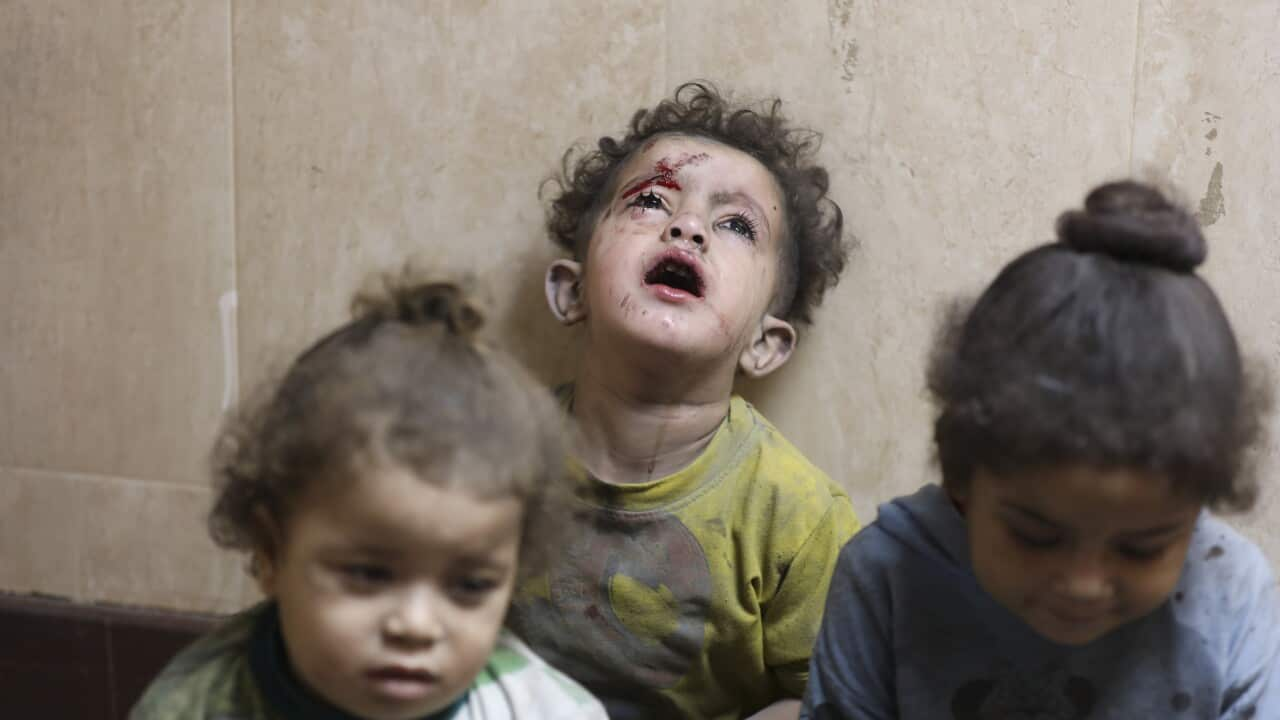Key Points
- Israel and Hamas' initial four-day truce was extended to seven days, before expiring on Friday.
- The situation inside the enclave continued to worsen, with displacement and disease spiralling out of control.
- International experts have called for a sustained ceasefire.
Fighting between Israel and Hamas has resumed, after a expired in the early hours of Friday.
The so-called ceasefire, which Israel described as a "humanitarian pause", gave the two sides the chance to exchange more than 105 Israeli hostages and 240 Palestinian prisoners, while also allowing humanitarian aid convoys to enter the besieged enclave.
Israel has bombarded Gaza since Hamas' 7 October attack in which more than 1,200 people, including an estimated 30 children, were killed and over 240 hostages taken, according to the Israeli government. More than 15,000 people have been killed in Gaza since 7 October, including almost 6,000 children, according to the health ministry in Hamas-controlled Gaza.
The 7 October attack was a significant escalation in the long-standing conflict between Israel and Hamas.
The truce, however fragile, was largely welcomed by the international community, with growing international pressure for Israel and Hamas to prolong the pause after having already extended it for an extra 48 hours from Tuesday. Some hoped the agreement may progress to a longer-term ceasefire in a conflict that has now been raging for more than 60 days and claimed an estimated 16,000 lives.
But while the pause provided Gazan residents with desperately needed respite from Israeli air raids and bombing strikes, the situation on the ground in the Gaza Strip was far from peaceful. Dr Marika Sosnowski, a research fellow at Melbourne Law School and an expert in ceasefires, told SBS News: "the nature of the violence has changed".
What happened during the seven-day pause?
"When we think about violence, we think about bombs falling from the sky – and that's what we've seen for the last 60 to 70 days in Gaza – but there's lots of different ways things can be violent," Sosnowski told SBS on Thursday, before the ceasefire was extended for a second time and hostilities resumed on Friday.
"One of those that has happened under the ceasefire and continues to happen is this displacement of Palestinians from their homes and their properties and of destruction of the strip."
The latest figures from the United Nations Office for the Coordination of Human Affairs (UN OCHA) estimate that as many as 1.8 million people in Gaza, or nearly 80 per cent of the population, are internally displaced. Many of those are residents of northern Gaza who have been driven south under pressure from Israeli forces, and are now forbidden from returning to their homes.
The Israeli Defence Forces said the order was aimed at moving civilians away from "Hamas terror targets", which it believes are concentrated in the north.
"It's not the same kind of physical, direct violence of a bomb dropping from the sky, but it's psychologically and emotionally violent for Palestinians, that they have been displaced from their homes and cannot now go back to them," Sosnowski said. "I mean, I think we have to think about that for ourselves: if you couldn't go back to your house to get what you could from it, old photos or clothes, that would be very distressing."
Meanwhile, those being evacuated from the north to the south are being directed through a humanitarian corridor where Israeli forces have established checkpoints equipped with surveillance systems.
What's the humanitarian situation inside Gaza?
Of further concern is the humanitarian situation inside Gaza, and the insufficiency of aid that has been permitted to enter over the past week while combat ceased.
told reporters on Tuesday that it would be "impossible to satisfy all the dramatic needs of the population" within the allocated time for the truce, even with the 48-hour extension taken into account. He later reiterated his call for "the opening of additional crossings and streamlined inspection mechanisms to facilitate the delivery of life-saving aid".
On Wednesday, Director-General of the World Health Organization (WHO) reemphasised his concern about the high risk of infectious diseases in shelters for internally displaced persons, which he attributed to severe overcrowding and a lack of food, water, sanitation and waste management.
Ghebreyesus noted that since the start of the crisis that there had been more than 111,000 cases of acute respiratory infection, 36,000 cases of diarrhoea in children below five, and 24,000 cases of skin rash.
"Given the living conditions and lack of health care, more people could die from disease than bombings," he posted on X. "We need a sustained ceasefire. NOW. It's a matter of life or death for civilians."
Sosnowski similarly stressed that the truce, despite being "the best thing humans have devised during conflict to stop violence for a period of time," falls well short of what is needed to address the humanitarian crisis in Gaza.

A convoy of trucks carrying fuel and aid drive in Gaza City's Zeitoun district on 25 November. Source: AFP / Mahmud Hams/via Getty Images
The Israeli military has said it is hitting schools, hospitals and ambulance areas - acts that many have labelled war crimes - because Hamas allegedly uses them as command centres, rocket launch sites and places to store weapons caches. Hamas has denied these claims.
The extent of displacement poses further issues. Even once the crisis finally ends, where will the 1.8 million internally displaced people, many of whose homes have been decimated over the past 10 weeks, go?
"They would like, obviously, to go back to their homes north, but they have probably been destroyed," Sosnowksi said. "So now the Gaza Strip, which was already one of the most crowded, small places on the planet, is now an even smaller, more crowded place. And that's a terrible, terrible way for people to be living."











